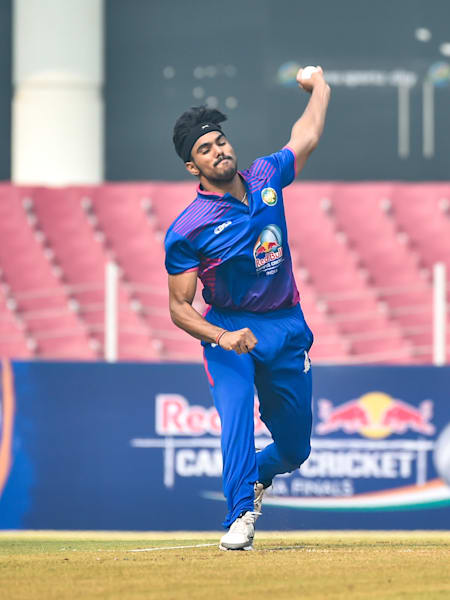Cricket
Fast bowling is considered one of the great art forms in the sport of cricket.
It is one of the most exciting aspects of the sport, but also one that tends to shorten a cricketer’s career through injuries if they don’t take adequate care.
This care comes in the form of fitness to make sure you don’t endure stress-related injuries as a fast bowler.
Ram Jangir from Jaipur and Kanishk Seth from Kolkata – both fast bowlers for local teams – explain a few aspects of why fitness is extremely important for pacers.
“Ground training is the most important. One day you have to bowl ten overs a day. On a good day, you’ll have to bowl thirty overs (during a Test match). It’s all about agility. In football, you get 90 minutes where the players have to be very intense and only get a break at half-time. Fast bowling is different. We only have to sprint for the run-ups. While returning back, that is our rest period. On that basis, monitoring the time I take to sprint for run-ups and the time I take to return back, I do my ground training and agility,” revealed Ram.
Both Ram and Kanishk say that strength and endurance in core, legs and shoulders are extremely important for fast bowlers. Kanishk adds that you can tailor your fitness routine according to the format of the game you are playing.
“If you’re playing T20, you have to go all out for power training. If your basics are strong, only then can you go for power training. If you’re playing One Day however, you need basic strength. You have to lift a lot of weights, do a lot of running and it varies from bowler to bowler,” says Kanishk.
However both Ram and Kanishk agree that fitness is an unavoidable aspect of a fast bowler’s life. Here are their suggestions for exercises you should do if you are a fast bowler.
Stretching and warm-ups
Kanishk believes that stretching and warm-up is the most important foundation for maintaining a high level of fitness. “You have to be mobile, you have to be flexible. If your body is tight, it won’t allow you to perform well on a professional level. After that, you need to add basic strength to your body. If the basics are strong, only then can you push yourself for plyometrics and power training,” says Kanishk.
Plank
Planks are a very effective exercise for fast bowlers. They do not need specialised equipment and can be performed almost anywhere. Planks help build strength in the core and lower back; since lower back injuries are extremely common among fast bowlers, planks are a must to avoid this injury. For a variation to the standard plank hold, you could add rotational movements at the hips which will further work your core and abdominal muscles.
Isometric holds
These are exercises where your muscles are engaged without movement of the body or joints. You essentially build tension for your muscles to work through by maintaining a particular position with your body, pushing/pulling an immovable resistance or holding weight in a particular position. Isometric exercises are extremely important for fast bowling because they help with stability and transfer of energy.
“There is a transfer of energy involved wile fast bowling. For instance, transfer of energy from one leg to another and from non-bowling hand to bowling hand,” says Ram to explain why isometric exercises help.
Squats
Fast bowlers need strong legs that can handle a lot of mechanical stress. There are few better exercises than squats for strength and conditioning of lower limbs.
Ram suggests not doing a full squat when exercising for fast bowling. Instead, he suggests squatting to an angle that is similar to your bowling action when you make your Back Foot Contact (BFC).
Single-leg Romanian deadlift
Coaches use a single leg balance test to identify fast bowlers who are at high risk of sustaining back or lower limb injuries. For these players, they will usually then suggest single-leg Romanian dead lifts as part of their exercise routine. This exercise focuses on the posterior chain of limb muscles, which means it strengthens the hamstring and glutes. They are another great exercise to avoid stress-based lower back and leg injuries that plague fast bowlers.
Chest press
Fast bowlers also need plenty of activation in the muscles around the shoulders and chest. The level of strength and flexibility needs to be balanced when it comes to the shoulders. However, lifting heavy weights over the shoulder could add the risk of injury during training. Instead of overhead shoulder exercises, it is recommended to do the chest press to enhance strength and power. The chest press can be executed with a variety of equipment including dumbbells, barbells or a bench with light weights.









